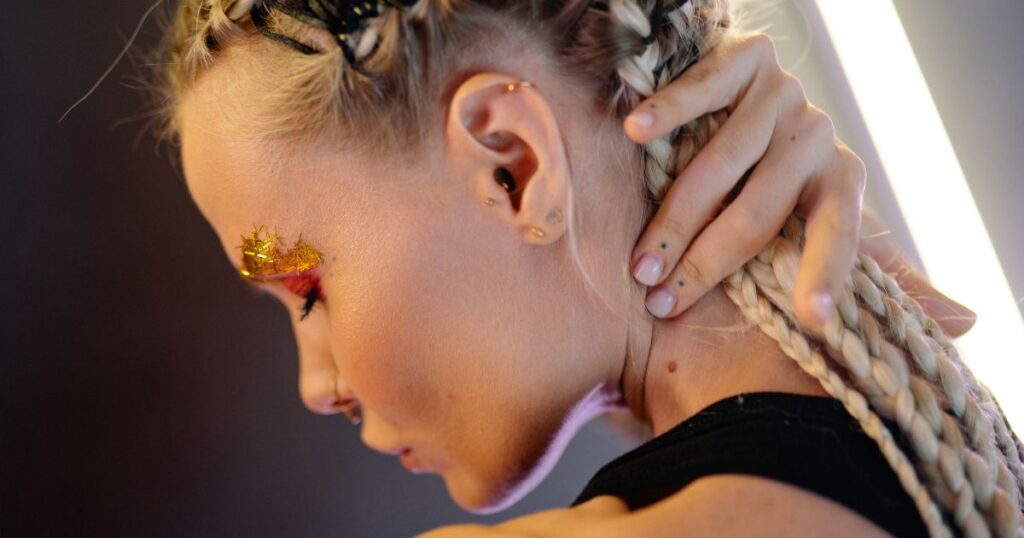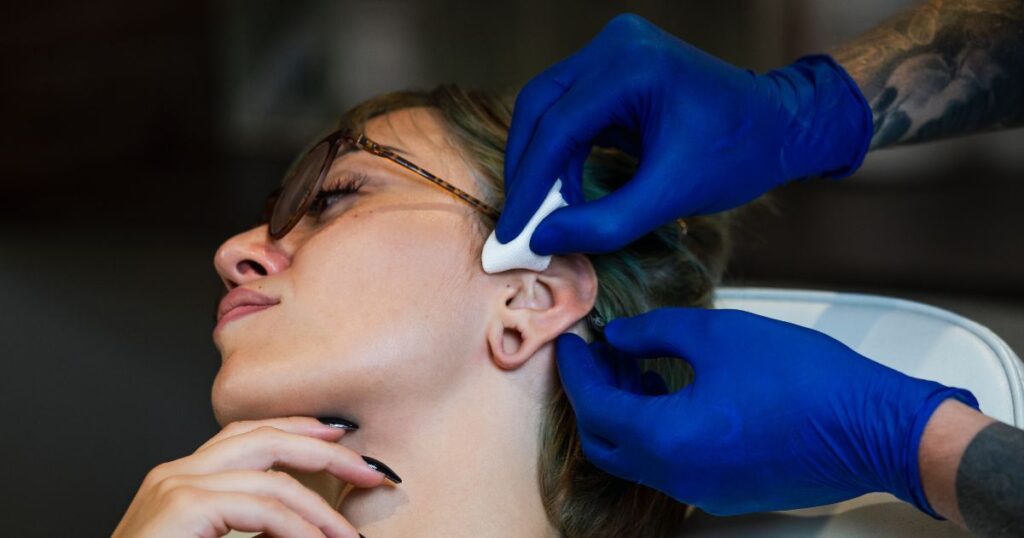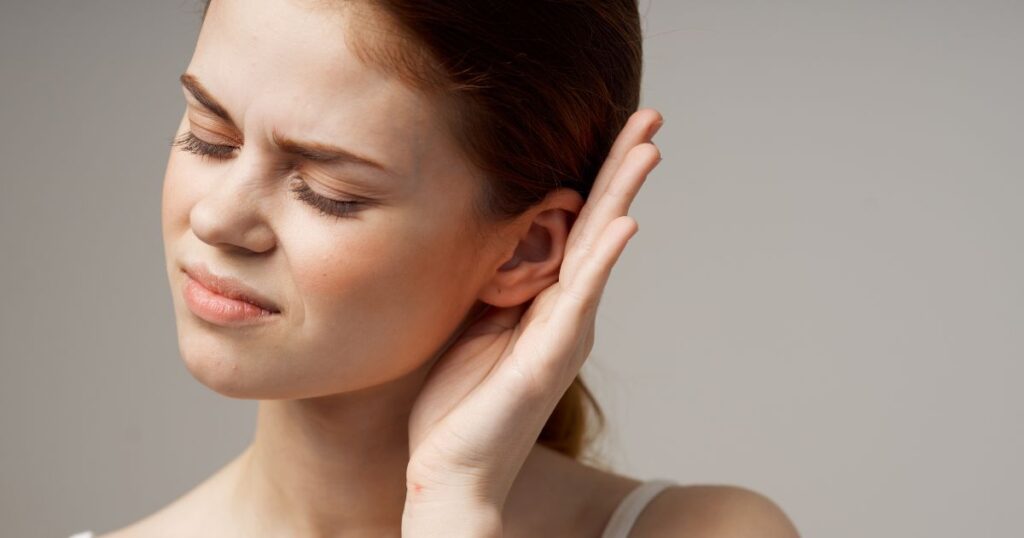Ear piercings are a timeless form of self-expression, with their popularity soaring across age groups and cultures. Whether for fashion, tradition, or personal significance, the decision to adorn one’s ears speaks volumes about individuality and style. However, amidst the excitement and aesthetic appeal, a crucial aspect often gets overlooked – the healing process. Understanding how long ear piercings take to heal is fundamental not only for aesthetic maintenance but also for preventing potential complications such as infections or delayed healing.
- Why Healing Knowledge is Essential:
- Prevents Infections: Knowing how to care for your piercing reduces the risk of infections.
- Ensures Aesthetic Integrity: Proper healing maintains the piercing’s appearance and longevity.
- Promotes Comfort: Accelerates the transition from a fresh wound to a comfortable, fully healed piercing.
- Factors Influencing Healing:
- Type of Piercing: Different piercings heal at different rates.
- Personal Health: Overall wellness can speed up or slow down healing.
- Aftercare Routine: Effective aftercare is critical for a smooth healing journey.
This article will guide you through the essential knowledge and tips for ear piercing aftercare, focusing on clean beauty principles to ensure your piercing heals beautifully and healthily. From understanding the basics of the healing process to addressing common issues, we’re here to support your piercing journey every step of the way.
Table of Contents - Click to Go
The Basics of Ear Piercing Healing
When you decide to get an ear piercing, you’re not just adding a piece of jewelry; you’re inviting your body to start a natural, intricate healing process. Understanding this process is crucial to ensure your new piercing heals beautifully and healthily. Let’s break down the basics:
The Healing Response:
- Immediate Reaction: Right after the piercing, your body’s first response is inflammation. This might sound negative, but it’s actually a sign that your body has kicked into gear, starting the healing process.
- Tissue Repair: Following the initial inflammation, the body begins to repair the pierced area. This involves the growth of new skin cells and the formation of new tissue around the jewelry.
Factors Influencing Healing Time:
Several elements can affect how quickly your piercing heals. Paying attention to these can help you set realistic expectations and care for your piercing appropriately.
- Piercing Location: Earlobes tend to heal faster than cartilage piercings due to their fleshy nature and better blood supply.
- Personal Health: Your overall health and wellness play a significant role. A healthy lifestyle can support faster healing.
- Aftercare Routine: Diligent aftercare is perhaps the most controllable factor that can speed up healing or slow it down if neglected.
Healing Time:
- It’s essential to note that healing times vary widely. Earlobe piercings can heal in as little as 6-8 weeks, while cartilage piercings may take 3-6 months or more.
Aftercare Importance:
- The cornerstone of a successful healing process is proper aftercare. This includes cleaning the piercing with a saline solution, avoiding unnecessary touching, and keeping the area dry and clean.
Remember:
- Every body is unique, and so is every healing journey. Listening to your body and following professional aftercare advice are key to ensuring your piercing heals well.
Types of Ear Piercings and Their Healing Times

| Type of Piercing | Healing Time | Explanation |
| Lobe Piercings | 6-8 weeks | The lobe has a good blood supply, which aids in faster healing. |
| Helix Piercings | 3-6 months | Located on the upper ear’s outer rim, slower healing due to less blood flow. |
| Tragus Piercings | 3-6 months | Near the ear canal, requires careful aftercare due to its unique location. |
| Daith Piercings | 6-9 months | Located in the inner ear cartilage; popular for anecdotal migraine relief. |
| Conch Piercings | 6-9 months | Found in the ear’s central cartilage area, thicker cartilage extends healing times. |
| Industrial Piercings | 6-12 months | Consists of two piercings connected by a single piece of jewelry, needs diligent aftercare. |
| Rook Piercings | 6-9 months | Located in the ear’s upper ridge, prone to irritation from external factors like headphones. |
| Cartilage Piercings | 3-6 months to 6-12 months | General term for piercings located in the ear cartilage, varying healing times due to specific location and care required. |
This table now includes Cartilage Piercings as a general category, acknowledging the wide range of healing times based on the specific cartilage location and the level of care needed for each.
Essential Aftercare Tips for Ear Piercings

Proper aftercare is critical for the healing and long-term health of your ear piercing. By incorporating clean beauty principles, you ensure the process is not only effective but also aligns with a more natural, gentle approach to skincare. Here’s how to care for your new piercing with clean beauty in mind:
Choose Safe, Gentle Products:
- Saline Solution: Stick to a basic saline solution for cleaning. Mix pure sea salt with distilled water to avoid unnecessary additives.
- Natural Cleansers: Select cleansers that are free from harsh chemicals like sulfates, parabens, and artificial fragrances to minimize irritation.
Daily Cleaning Routine:
- Clean the piercing twice a day with your chosen solution, using a soft, clean applicator.
- Dry the area with a disposable paper towel to reduce the risk of bacterial transfer.
Avoid Common Irritants:
- Be cautious of hair and skincare products containing harsh chemicals coming into contact with your piercing.
- Avoid touching or moving the jewelry unnecessarily to prevent irritation and infection.
Support Healing Internally:
- Nutrition: A balanced diet rich in vitamins can enhance the body’s healing capability.
- Hydration: Drinking plenty of water helps keep the skin healthy.
- Stress Reduction: Activities like yoga or adequate rest can positively influence healing.
Be Mindful and Adjust as Needed:
- Monitor your piercing for any signs of irritation or unusual reactions. If something doesn’t feel right, consider switching to even gentler products.
- Consult with a piercing or skincare professional if you’re concerned about the healing process.
Adopting these clean beauty tips for your ear piercing aftercare not only promotes a smooth healing process but also supports a holistic approach to health and beauty.
Common Issues and How to Address Them

Here’s the table summarizing common issues related to ear piercings, their signs, and recommended actions:
| Common Issues | Signs | Action |
| Infections | Redness, swelling, warmth, discharge, pain | Increase cleaning with saline solution. Consult a healthcare provider if no improvement. |
| Allergic Reactions | Itching, rash, blistering | Switch to hypoallergenic jewelry. Ensure aftercare products are irritant-free. |
| Prolonged Healing | Slow or no healing progress | Review aftercare routine, diet, and reduce jewelry movement. Consider your nutrition. |
| Bumps Around Piercing | Keloids or small, pimple-like bumps | Continue gentle cleaning. For keloids, seek medical advice. |
This table provides a clear, concise overview of potential issues, how to recognize them, and the initial steps to take towards resolution, emphasizing a clean beauty approach.
Conclusion

As we wrap up our guide on how long do ear piercings take to heal, it’s clear that the healing journey is as unique as the individual and their choice of piercing. From the swift healing of lobe piercings to the more patient journey required for cartilage piercings, understanding and respecting the healing timeline is crucial for a healthy outcome. Here are the key takeaways:
- Patience is Key: Healing times vary widely, from 6-8 weeks for lobe piercings to up to 12 months for more complex cartilage piercings.
- Clean Beauty Aftercare: Embracing clean, non-toxic aftercare practices supports not only faster healing but also aligns with a holistic approach to health and wellness.
- Professional Guidance: When in doubt, seek advice from a professional. Whether it’s addressing common issues or ensuring your aftercare routine is on point, expert guidance can be invaluable.
Remember, the journey to a fully healed piercing is a testament to your body’s remarkable ability to heal itself, supported by your care and attention. By following professional aftercare guidelines and listening to your body, you can enjoy your new piercing for years to come. Let your piercing be a joyous expression of your individuality, adorned with the peace of mind that comes from knowing you’ve cared for it with the utmost respect for your body’s natural healing process.
Key Takeaways
Given the comprehensive nature of our discussion on the healing times for ear piercings and the best practices for aftercare, here are the essential points to remember:
- Healing Varies by Piercing Type: Earlobe piercings generally heal within 6-8 weeks, while cartilage piercings can take anywhere from 3 to 12 months.
- Clean Beauty Principles Enhance Healing: Utilizing non-toxic, gentle aftercare products aligns with clean beauty standards and promotes better healing.
- Patience and Care Are Essential: The healing process requires time, attention to aftercare, and a gentle approach to prevent complications.
- Professional Advice Is Invaluable: Consulting with piercing professionals or healthcare providers at any sign of trouble can prevent minor issues from becoming major complications.
- Holistic Health Supports Healing: A balanced diet, adequate hydration, and stress management contribute significantly to the body’s healing capabilities.
- Aftercare Routine Makes a Difference: Regular cleaning with saline solution, avoiding irritants, and minimizing jewelry movement are critical for healing.
- Be Mindful of Common Issues: Recognizing the signs of infection, allergic reactions, and other complications early can lead to quicker resolutions.
FAQs
Can I change my earring before the piercing is fully healed?
- No, it’s best to wait until the piercing has fully healed. Changing the earring too early can introduce bacteria and cause irritation.
How can I tell if my piercing is infected?
- Signs of infection include redness, swelling, warmth, unusual discharge, and increased pain. If you notice these symptoms, consult a healthcare provider.
Is it normal for a new piercing to bleed?
- Minor bleeding shortly after piercing is normal, but it should not persist. If bleeding continues, seek professional advice.
How often should I clean my piercing?
- Clean your piercing twice a day with a saline solution or as directed by your piercer.
Can I go swimming with a new piercing?
- It’s recommended to avoid swimming in pools, lakes, or oceans during the initial healing period to prevent exposure to bacteria.
What should I do if my piercing is taking longer to heal than expected?
- Ensure you’re following the aftercare instructions correctly. If the piercing is still not healing, consult with a professional for advice.
How can I speed up the healing process?
- Maintain a clean aftercare routine, eat a balanced diet, stay hydrated, and avoid unnecessary irritation to the piercing.
What are the signs of an allergic reaction to piercing jewelry?
- Signs include itchiness, redness, and swelling around the piercing. Switch to hypoallergenic jewelry if this occurs.
Can I pierce my own ears at home?
- Piercing at home can increase the risk of complications. It’s safer to have it done professionally in a sterile environment.
How do I choose the right jewelry for my ear piercings?
- Opt for hypoallergenic materials such as titanium, surgical stainless steel, or 14k gold, especially for initial piercings, to minimize the risk of allergic reactions and infections.
This FAQ section aims to address common concerns and questions regarding ear piercings, ensuring you’re well-informed about the care and considerations necessary for a healthy healing process.

